UgandaMap
February Hippos? 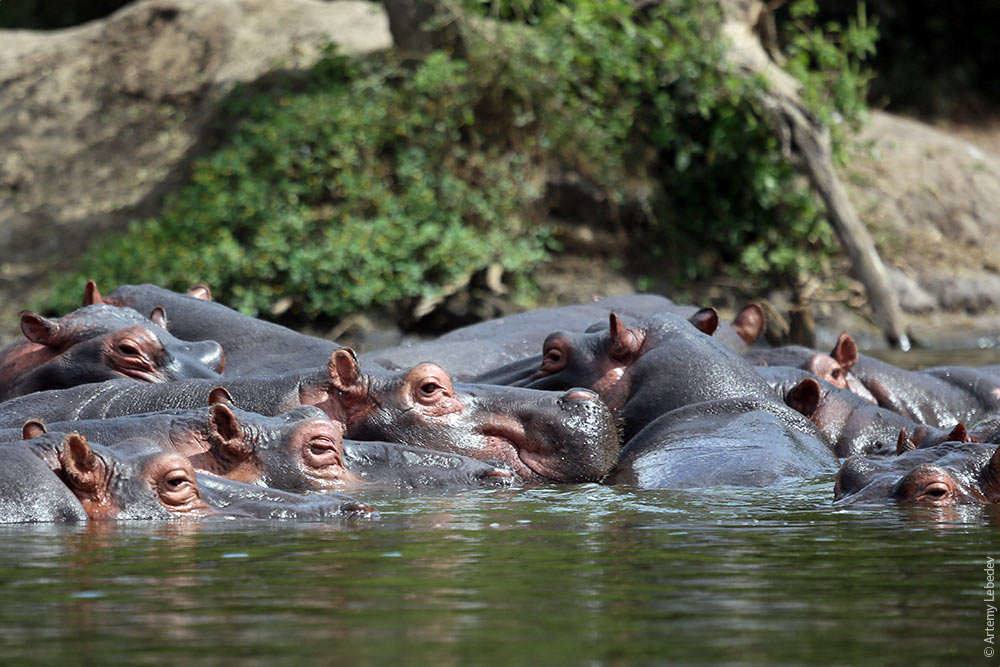 Crocodiles?  Buffalo? 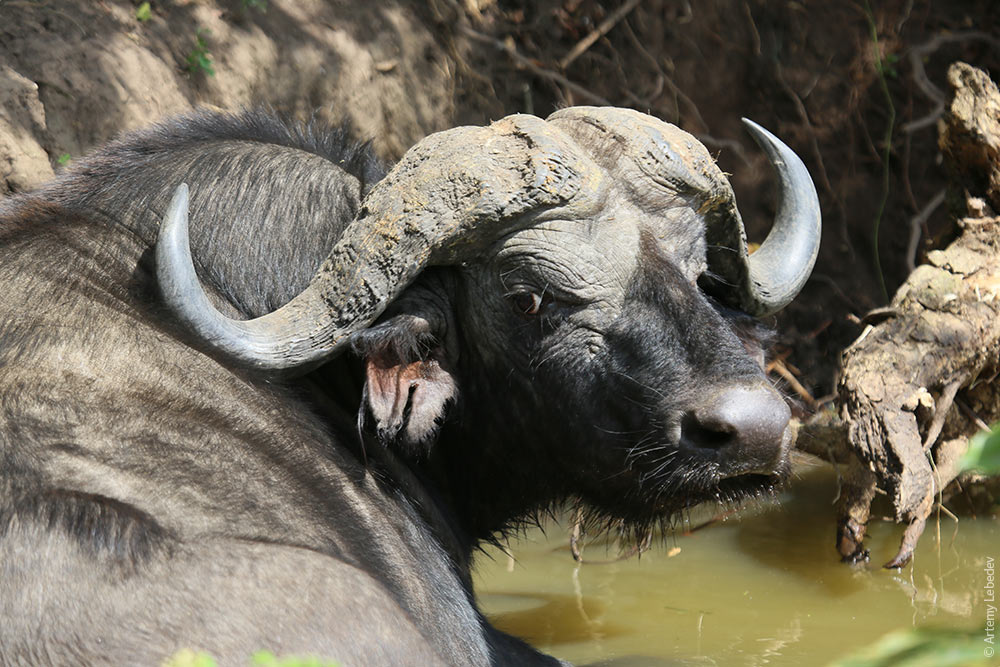 Birds?  You can see all that at the zoo. We’re interested in real life. Buses made in Uganda have a remarkable front jaw. 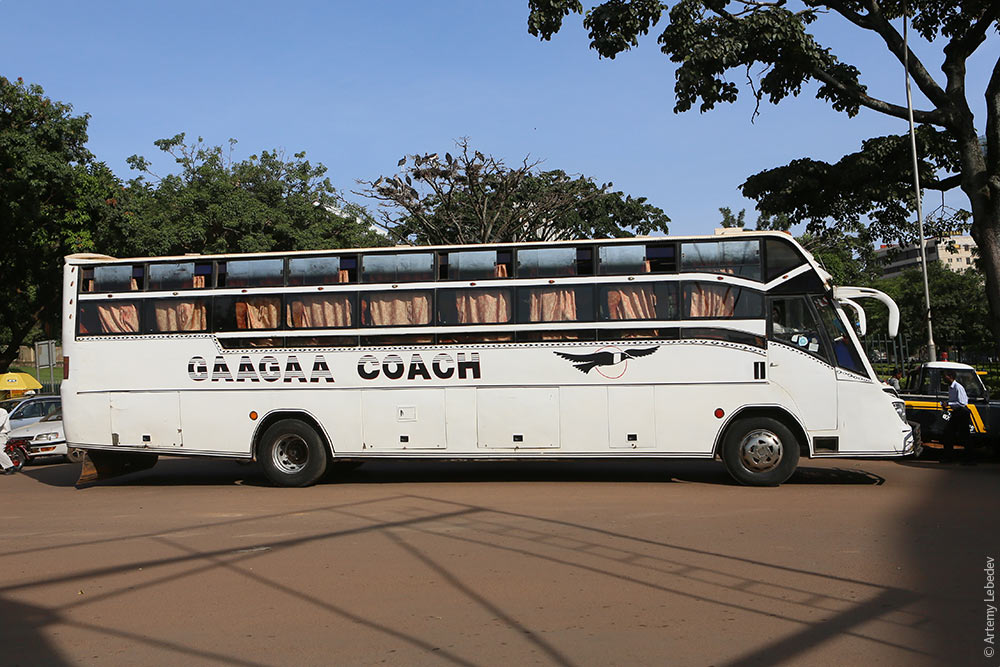 The side walls of standalone buildings are customarily stepped at the top (like in Bolivia). A light touch of Art Deco legacy, if you will. 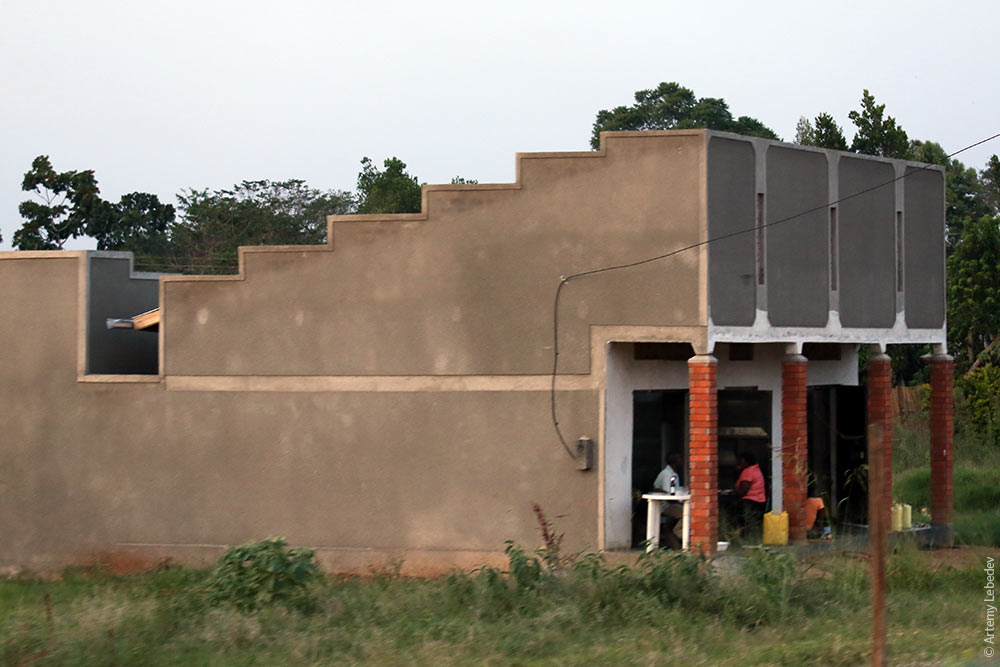 License plates are white in the front and yellow in the back (like in the UK, Algeria, or Sri Lanka). 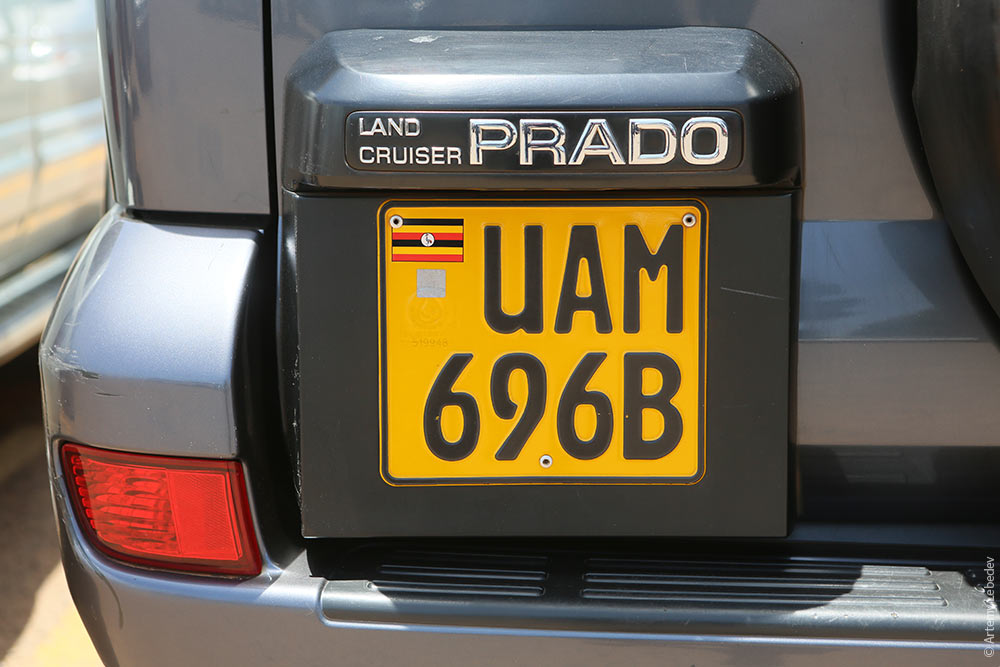 The rear bumpers of all pickups, buses, and trucks have stickers with diagonal red and white stripes. The stickers are always labeled and positioned correctly: the left one on the left, the right one on the right (unlike in neighboring Rwanda, where they’re always stuck on with the diagonal lines going in the same direction).  A Ugandan cow. 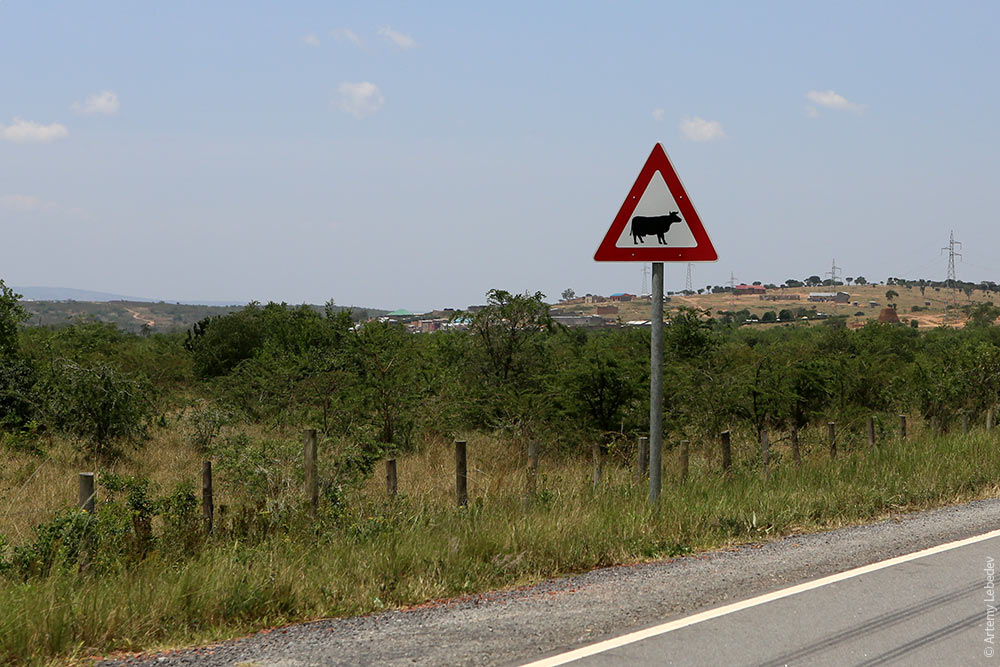 A pedestrian. 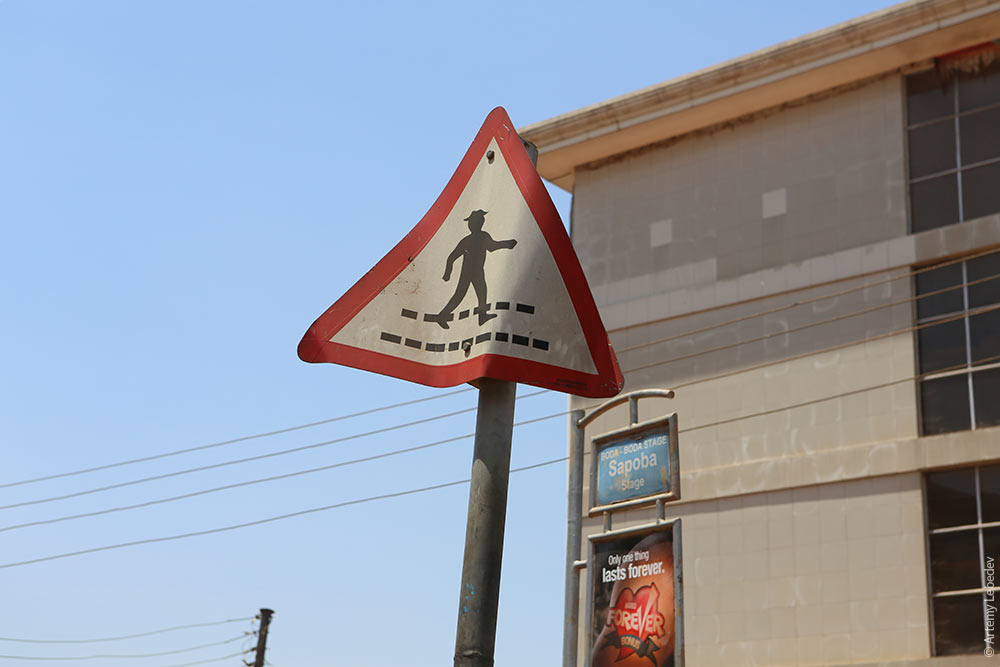 A live person stands on the road with a sign and supervises crossing children (like in Fiji). 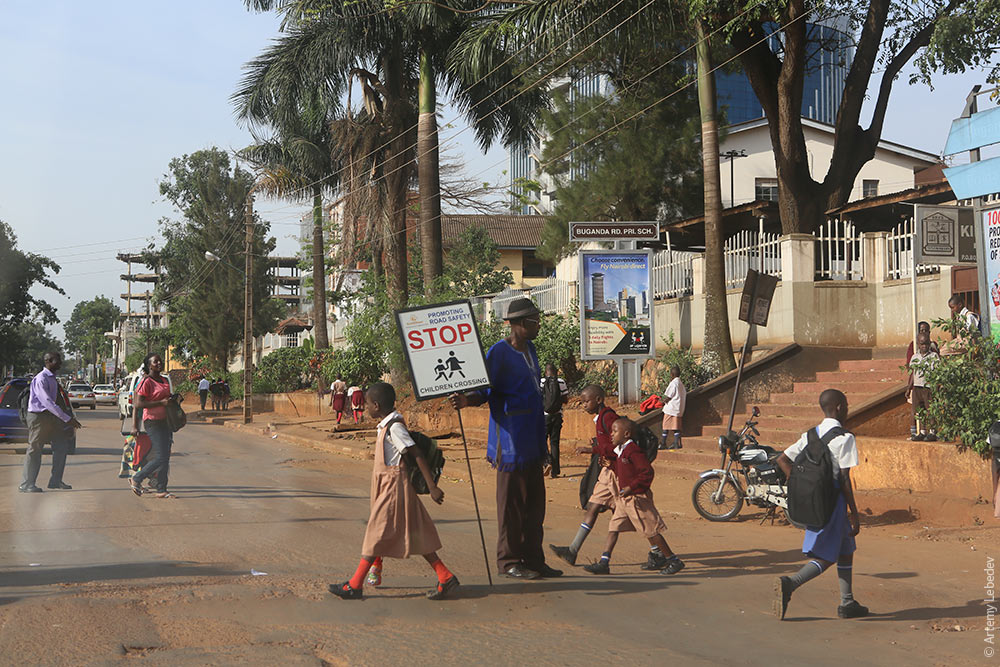 A “children crossing” sign without a live person. 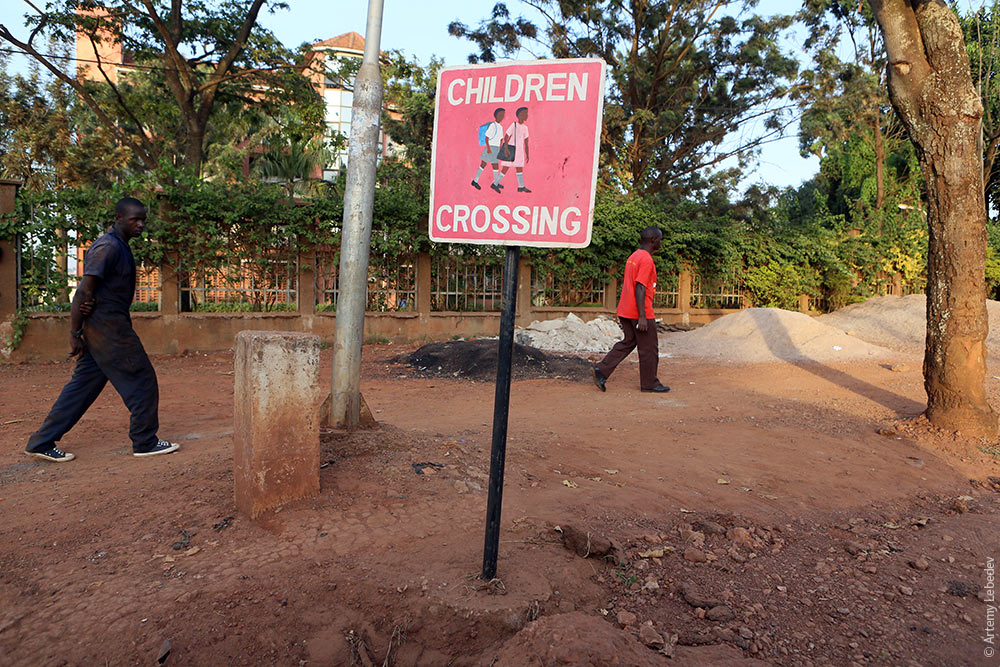 Bumpy road. 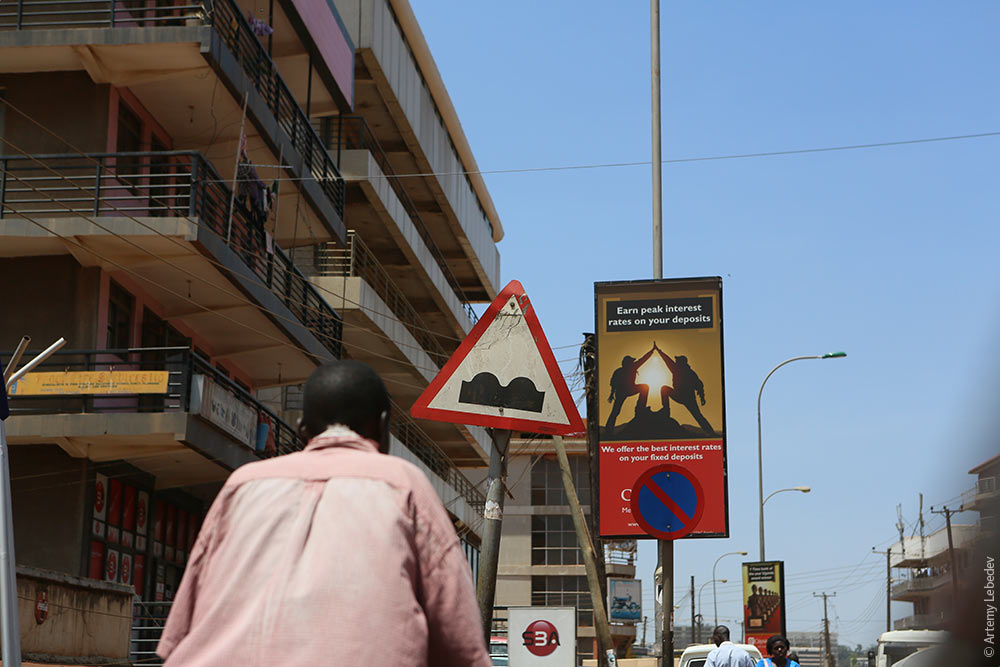 Schools, kindergartens, and sports clubs customarily have painted sculptures out front. 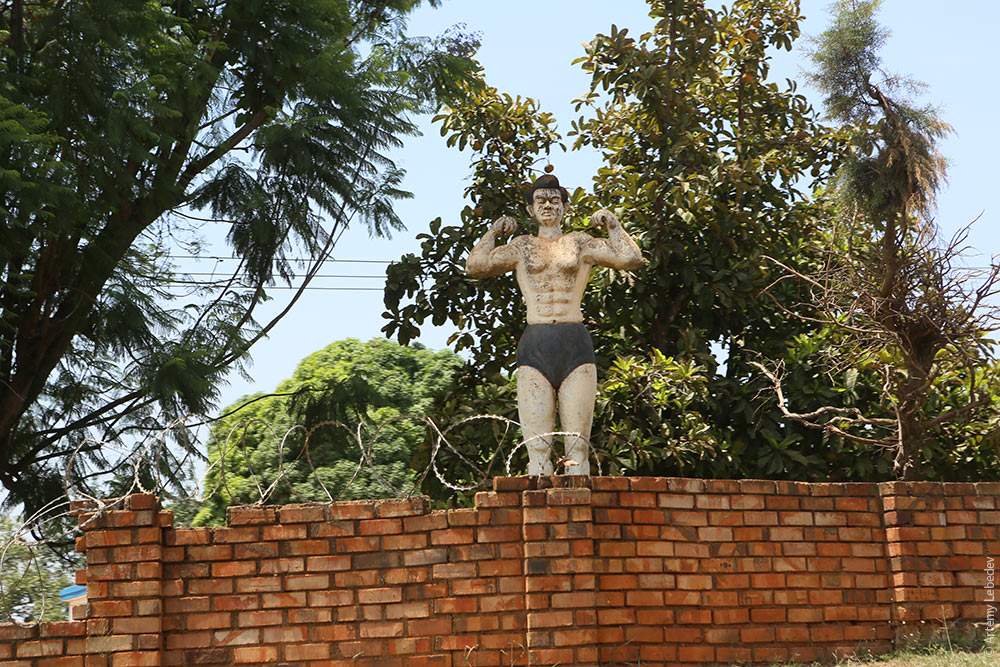 Various kinds of food are sold along the side of the road. A woman waves a fish to attract the attention of passing drivers. 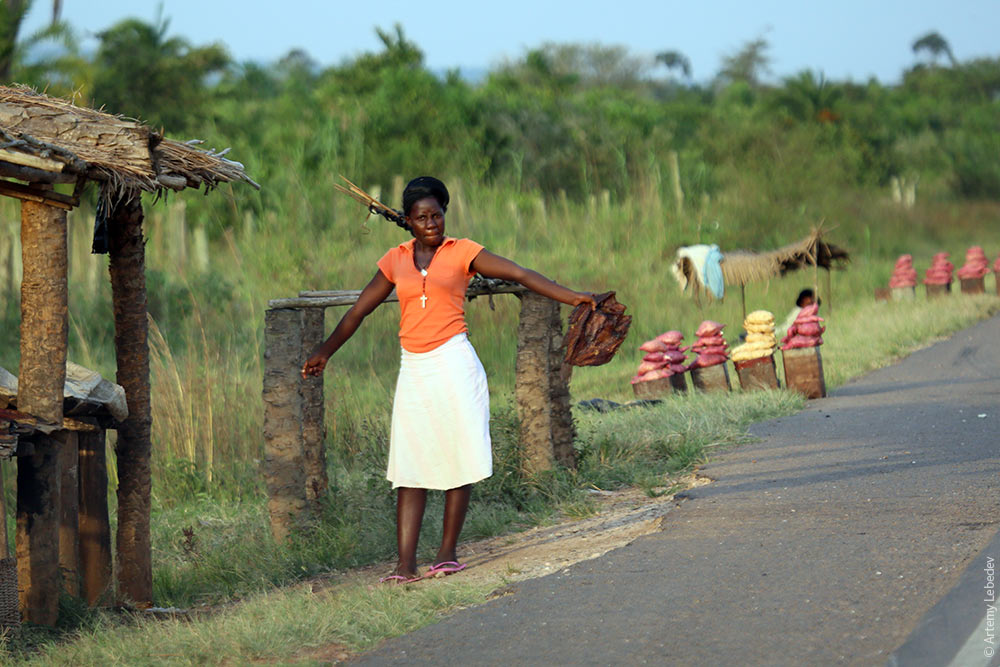 A poster illustrating the negative consequences of corruption. 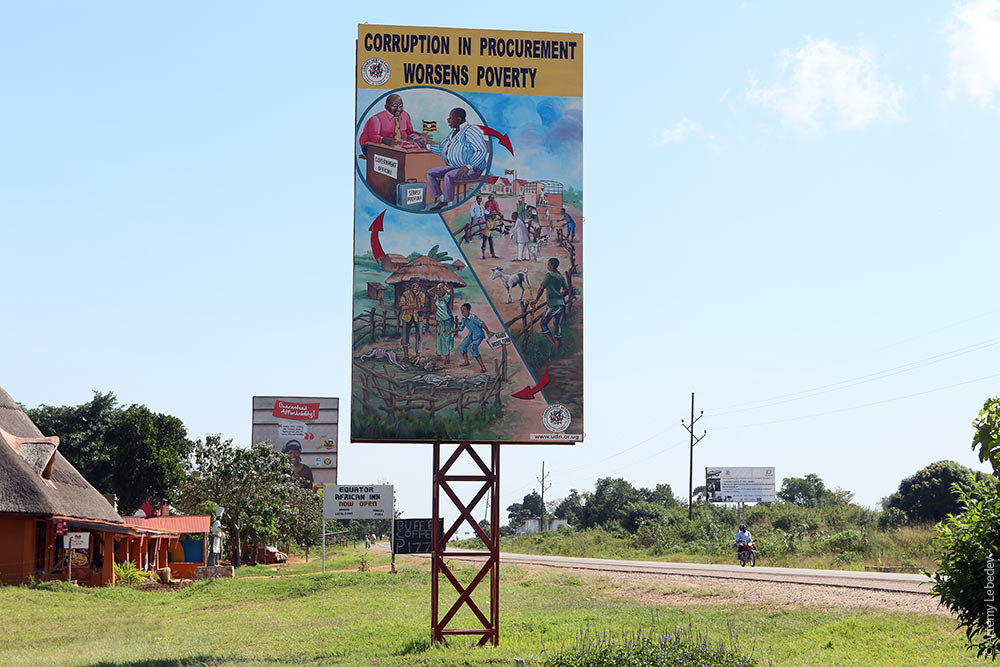 KampalaMapThe capital. 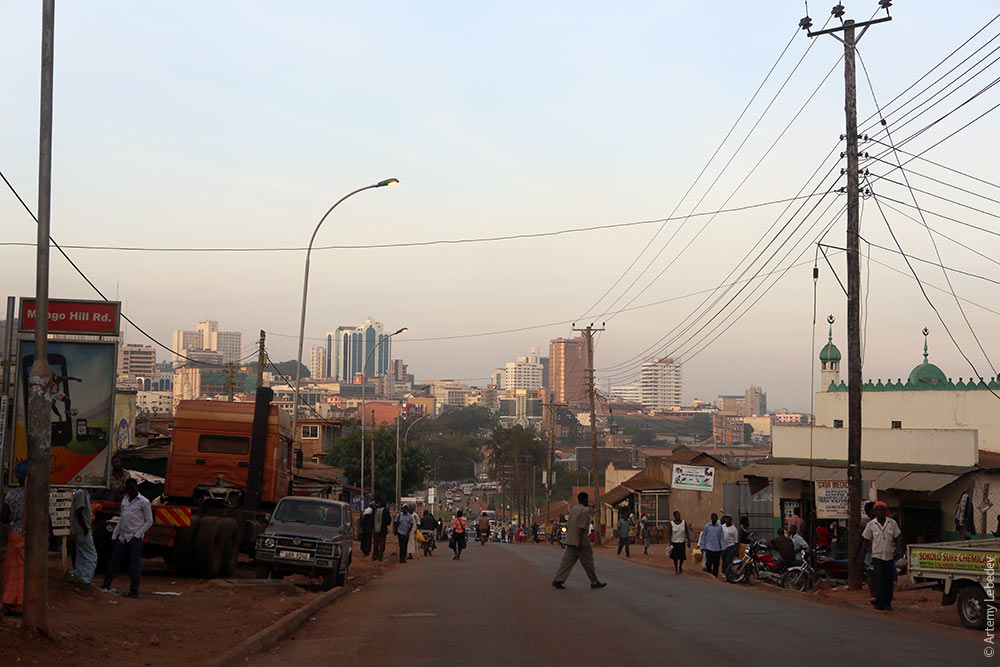 The city has lots of payphones. None of them work, but there’s a person selling minutes on a mobile phone next to each payphone. 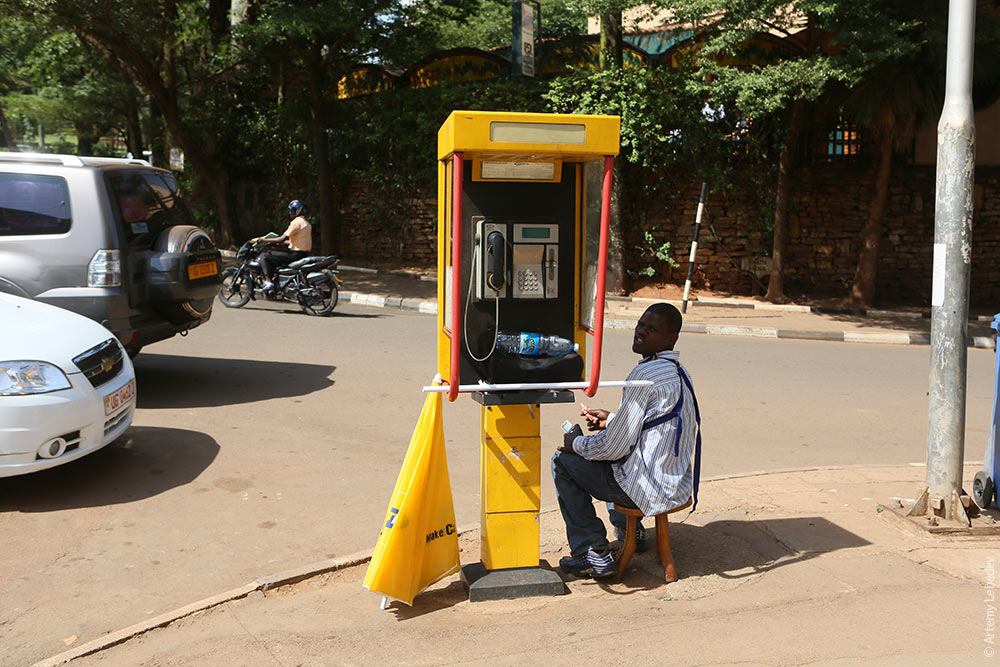 Street mailboxes don’t exist here. I came across just one (an old British model), but it had turned into more of a trash can.  Letters are mailed from the post office and received there as well, in individual PO boxes. 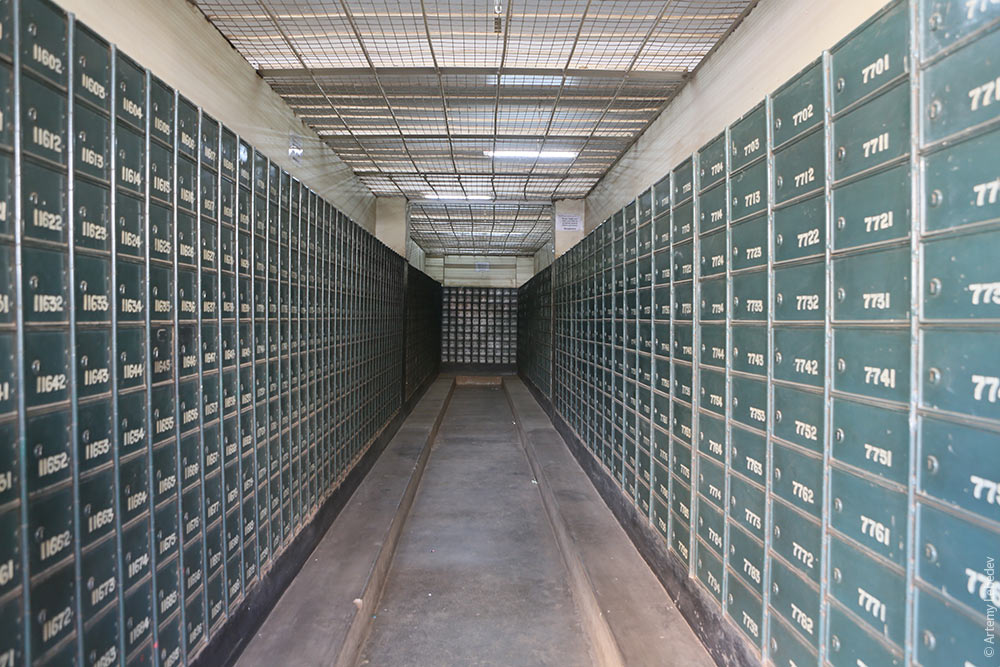 A traffic light. 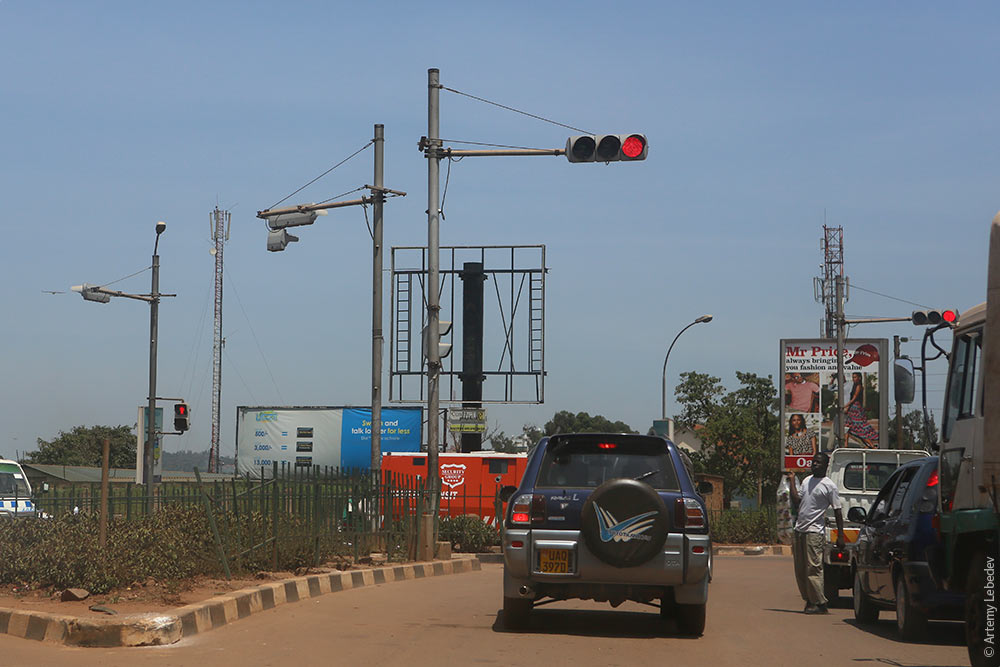 All share taxis are decorated with dashed lines of squares along the sides. 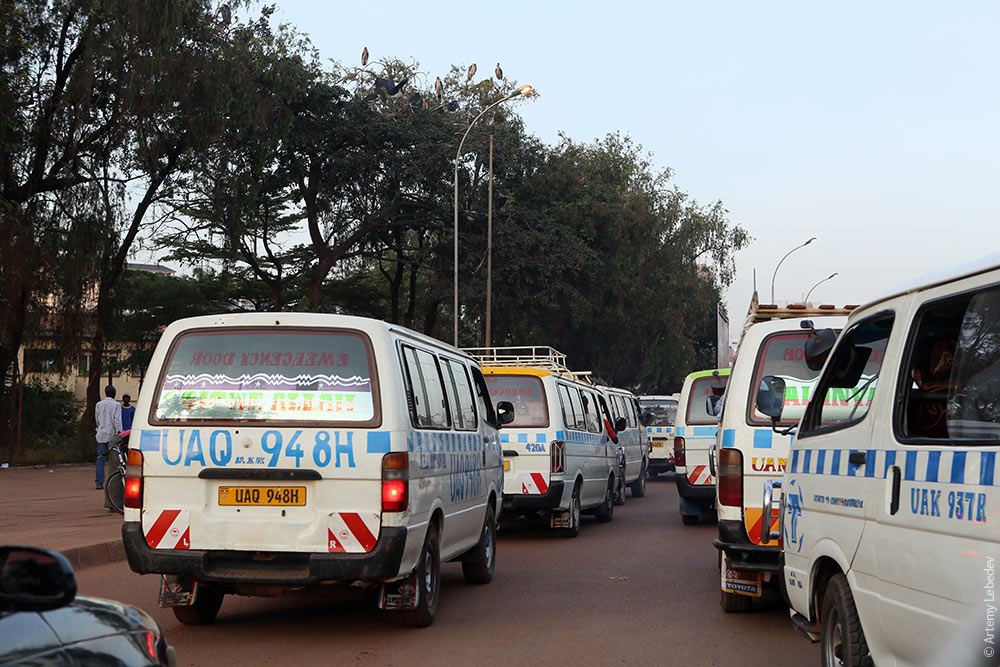 Unpleasant birds of some kind in the trees. 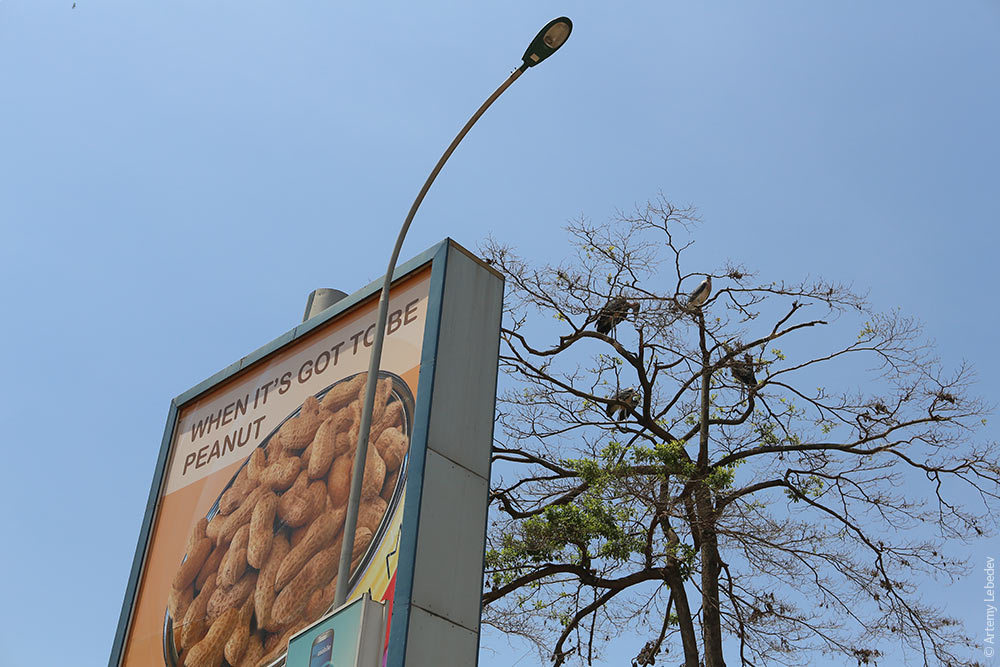 An advertising billboard. 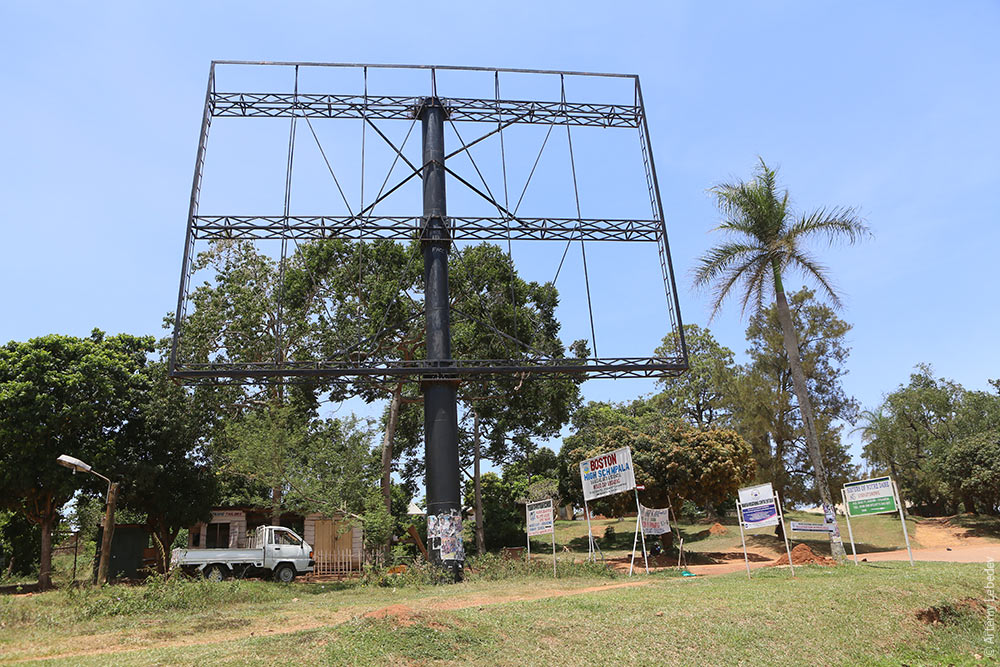 An electrical box. 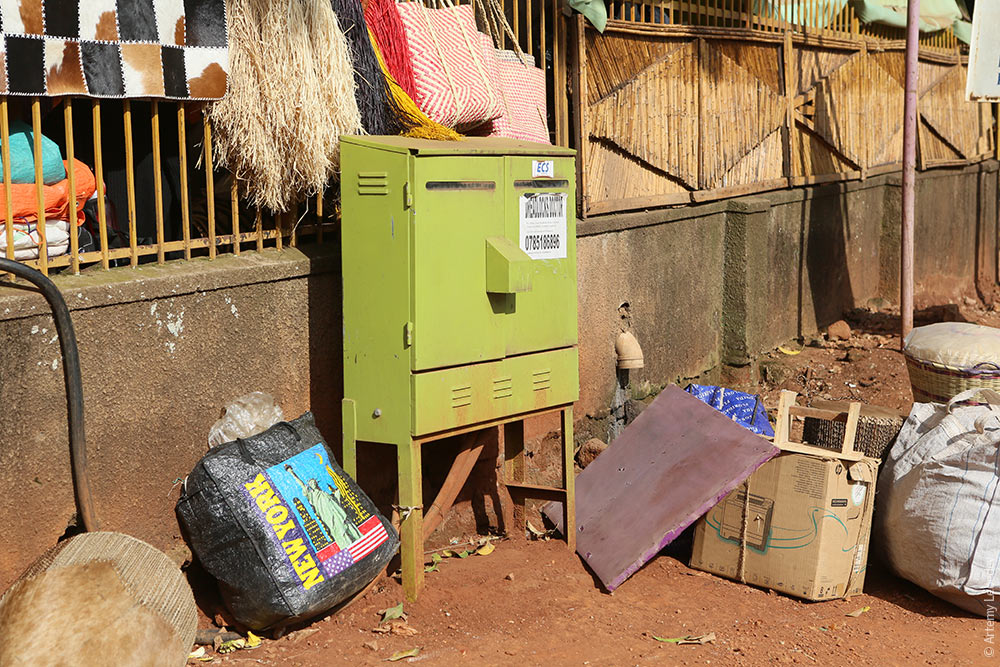 A parking meter. 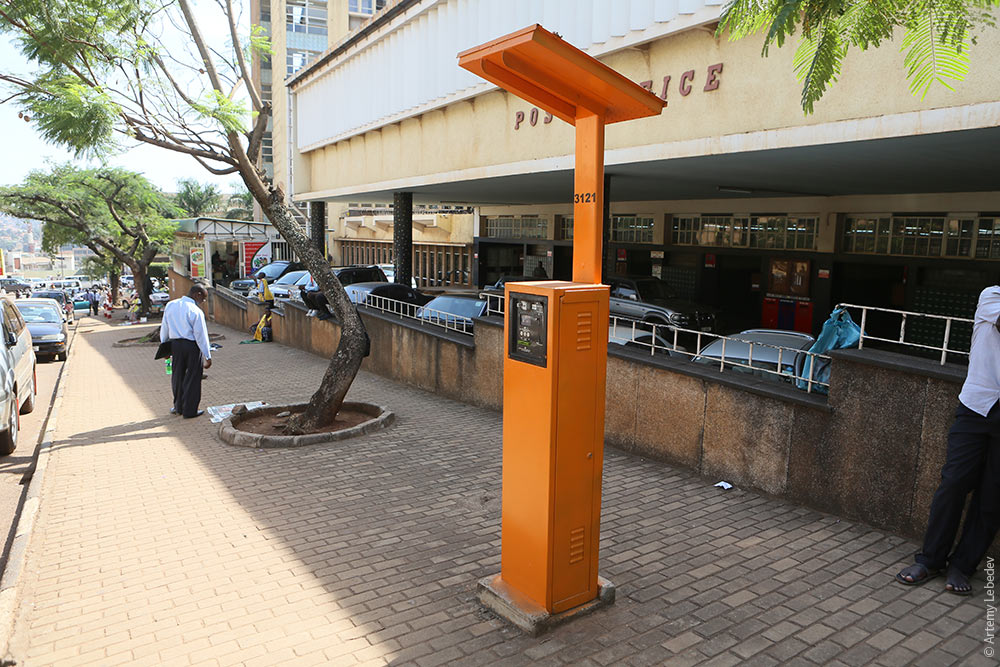 The typical city trash can consists of a tall green bucket and cone-shaped lid with a pictogram of a conscientious woodpecker-citizen and the name of the store the trash can belongs to. 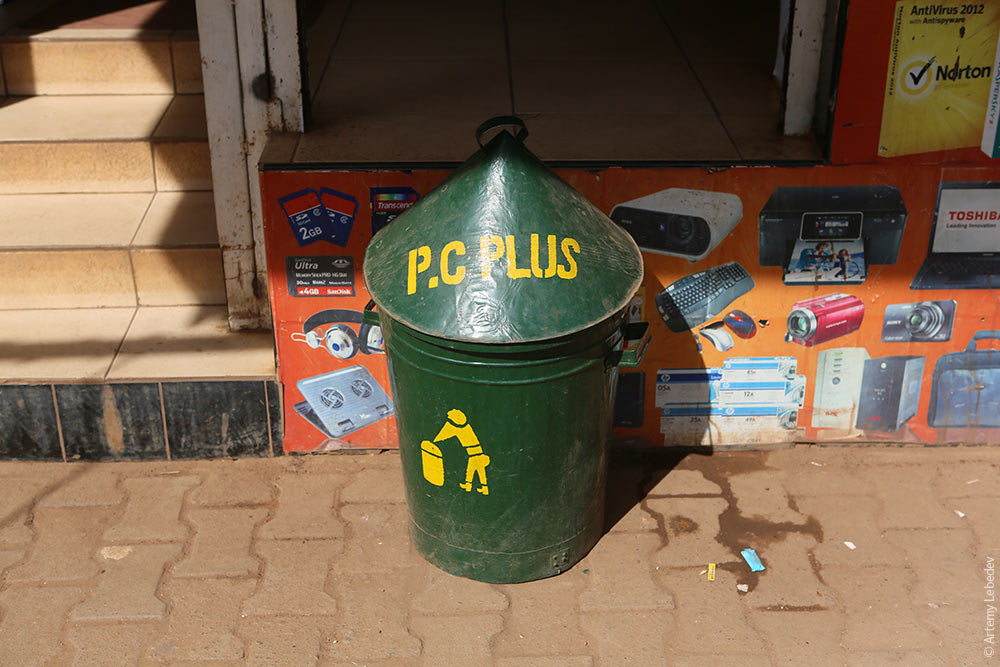 Street signs.  No sitting on the fence? Fine, I’ll sit next to it. 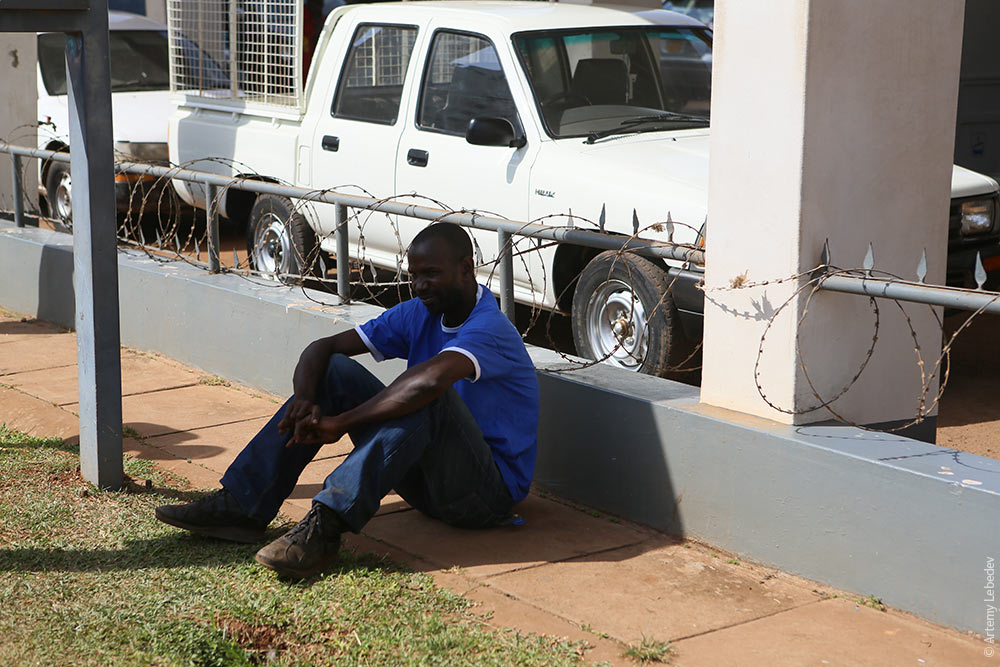 Street vendors. 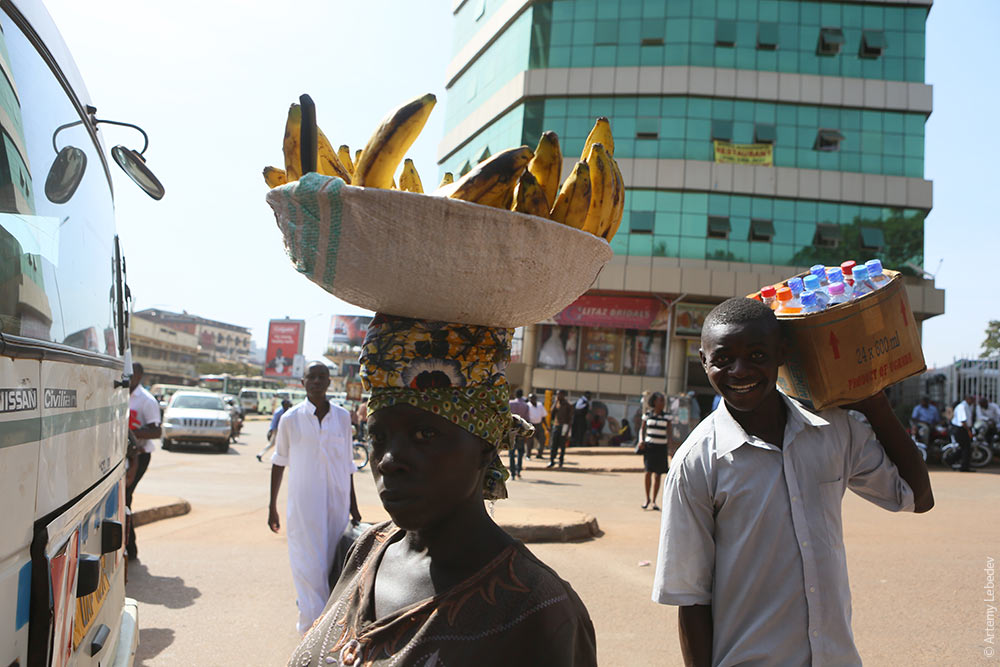 Some sort of campaign procession went by. 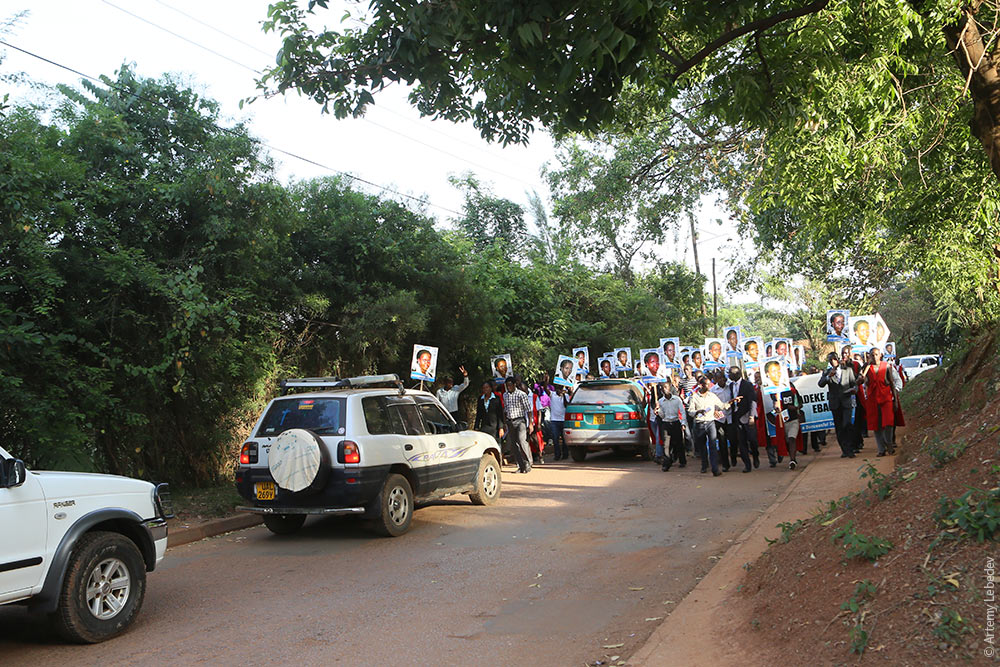 All in all, the city is fairly well kept, peaceful, and safe. So in order to get a more complete picture, let’s visit the slums, which are also peaceful and safe, but not as well kept. 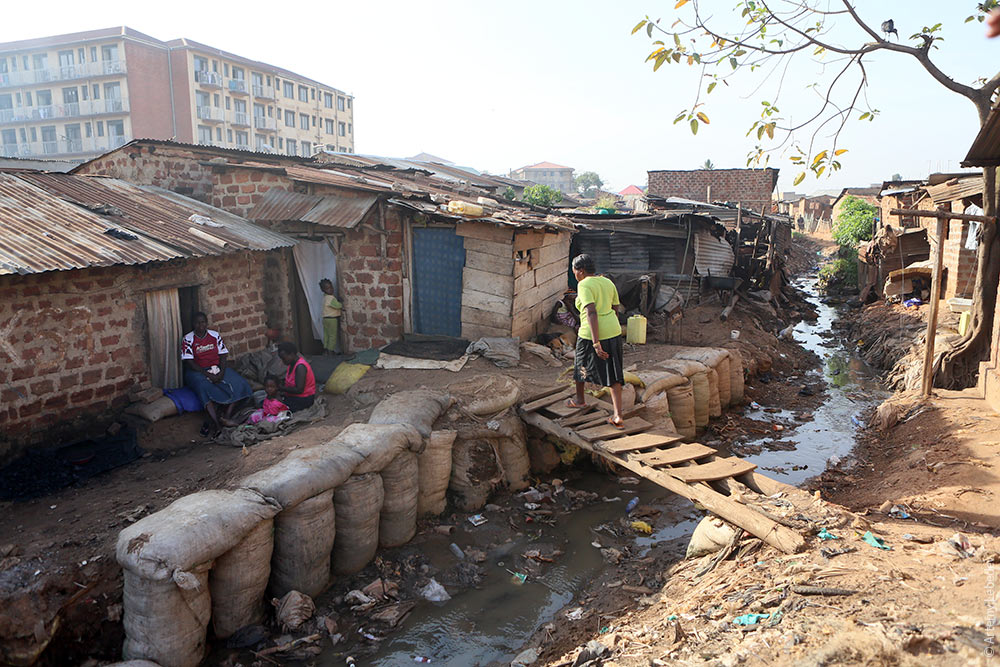 A phone charging kiosk (for those who have a cell phone but no power outlet at home). 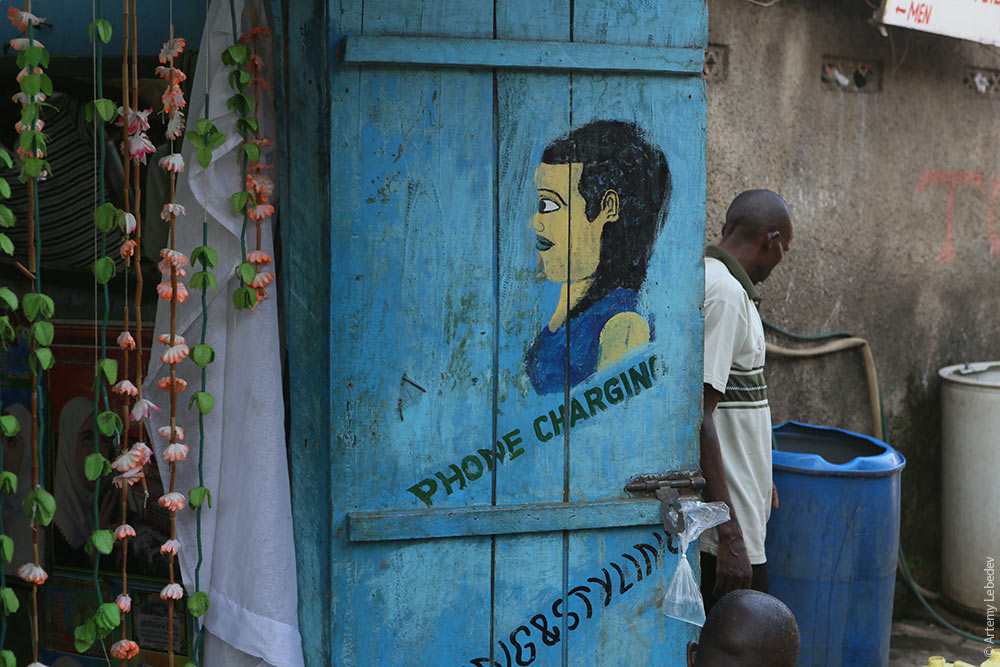 Slum main street. 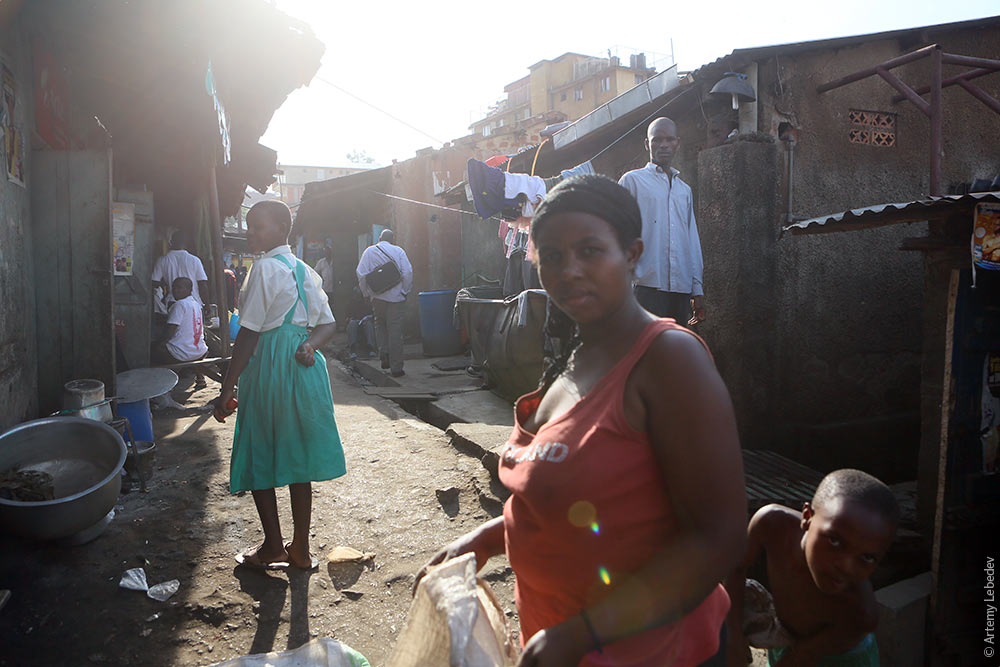 A beauty salon. 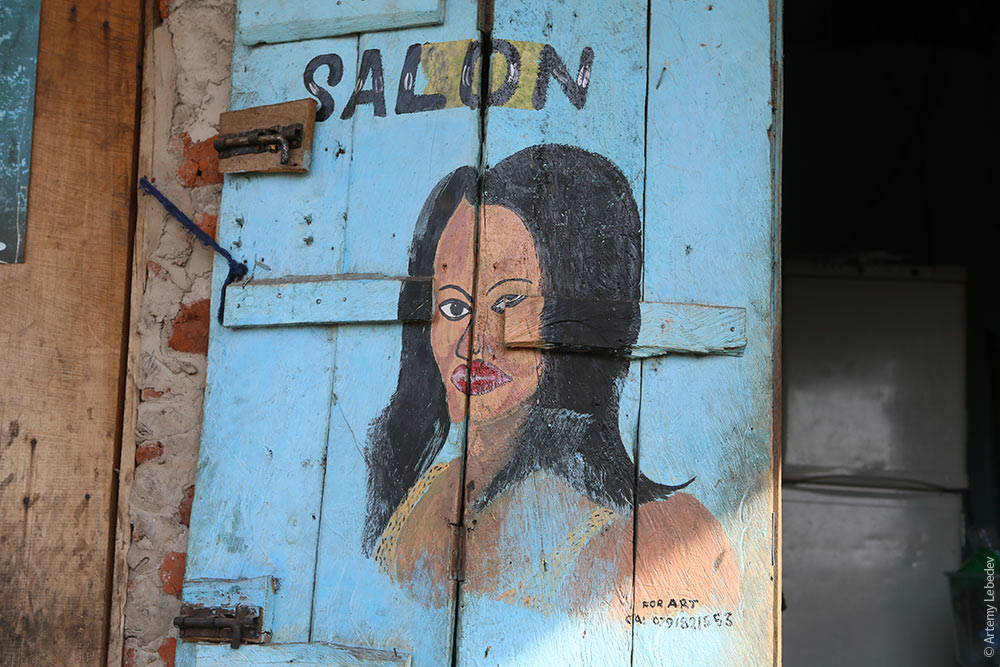 A shopping street. 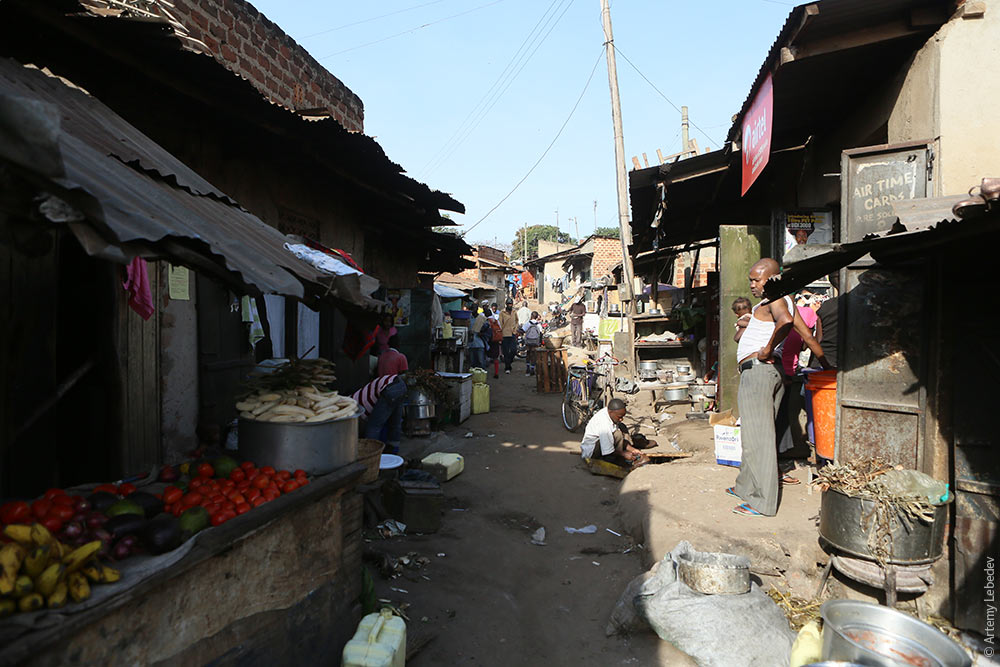 A gym. 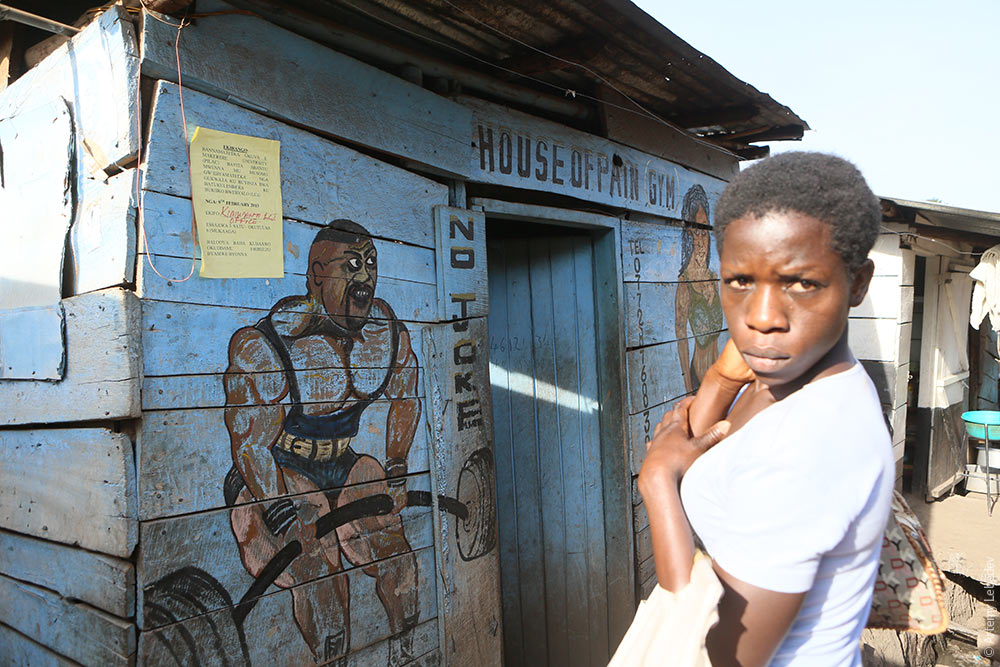 A little girl’s new toy. 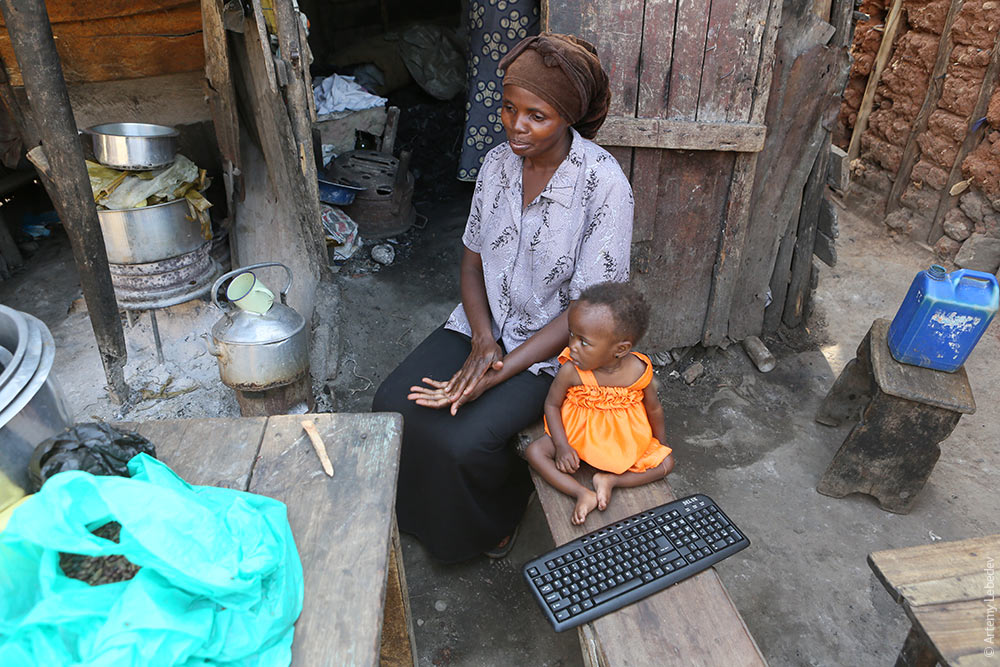 A laundromat. 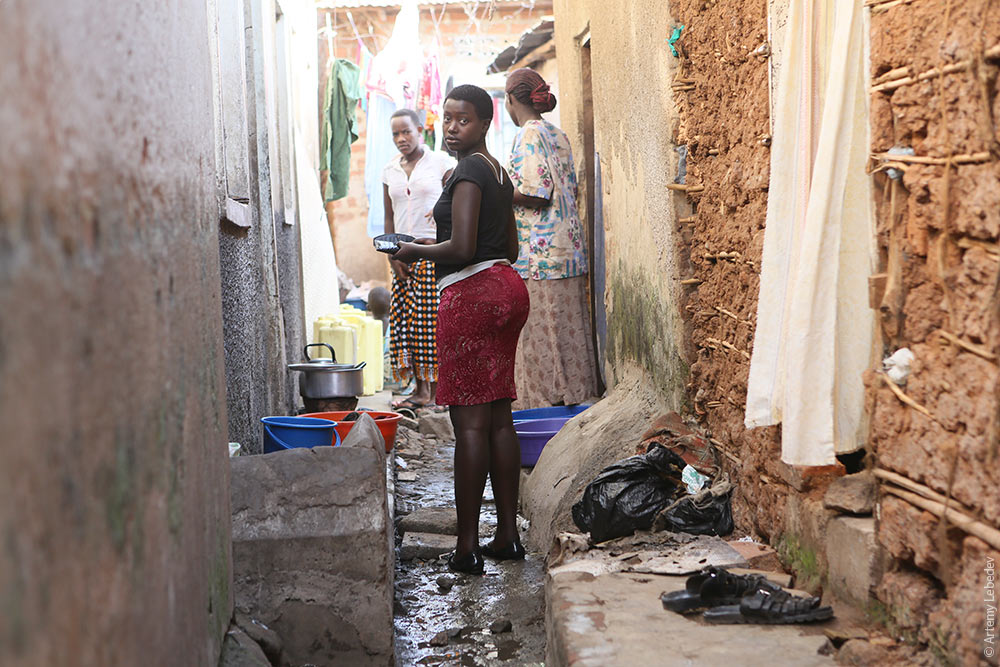 A butcher’s shop. 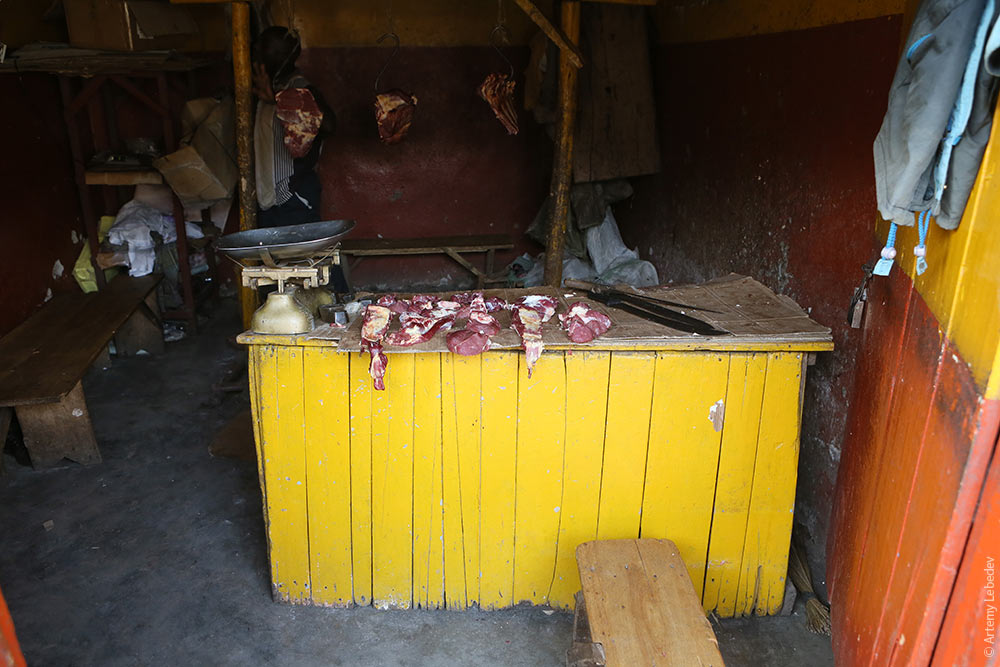 A hair salon. 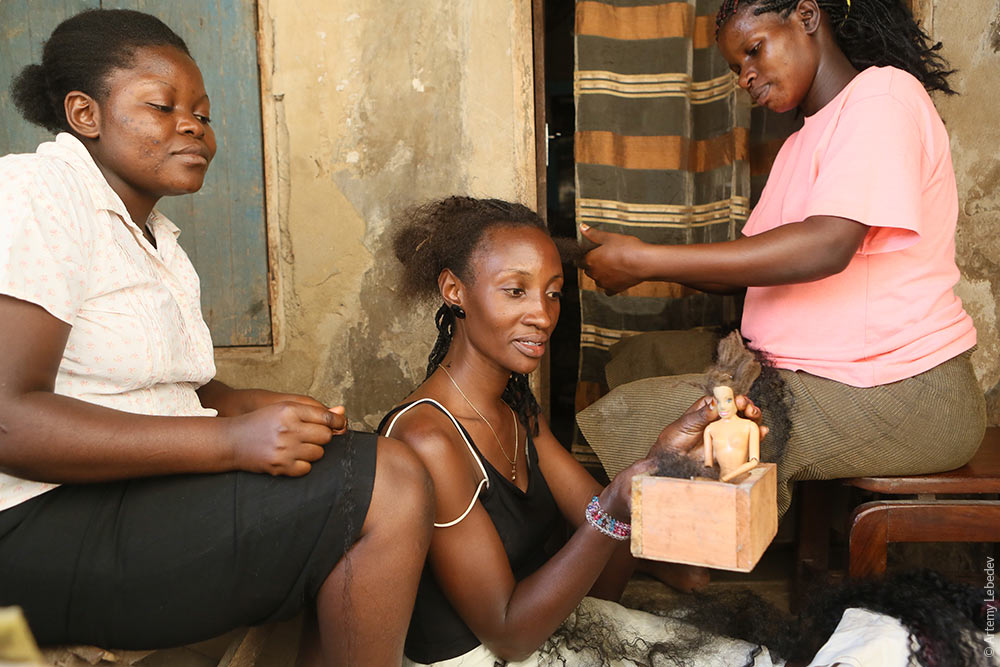 A water source, to which everyone comes with the traditional African plastic canisters that formerly contained humanitarian aid sunflower oil. 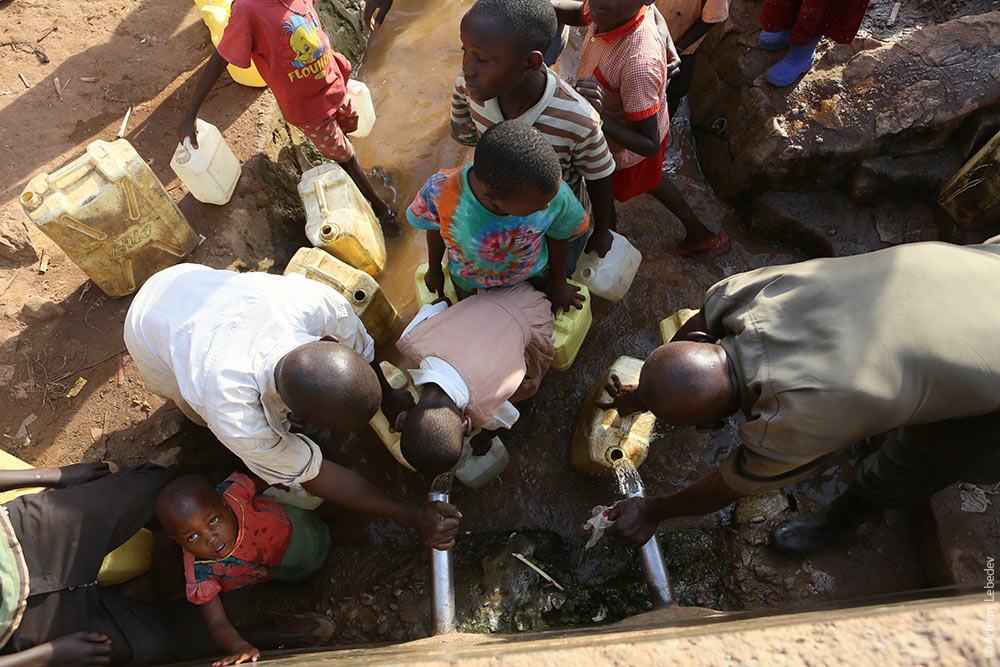 A local woman. 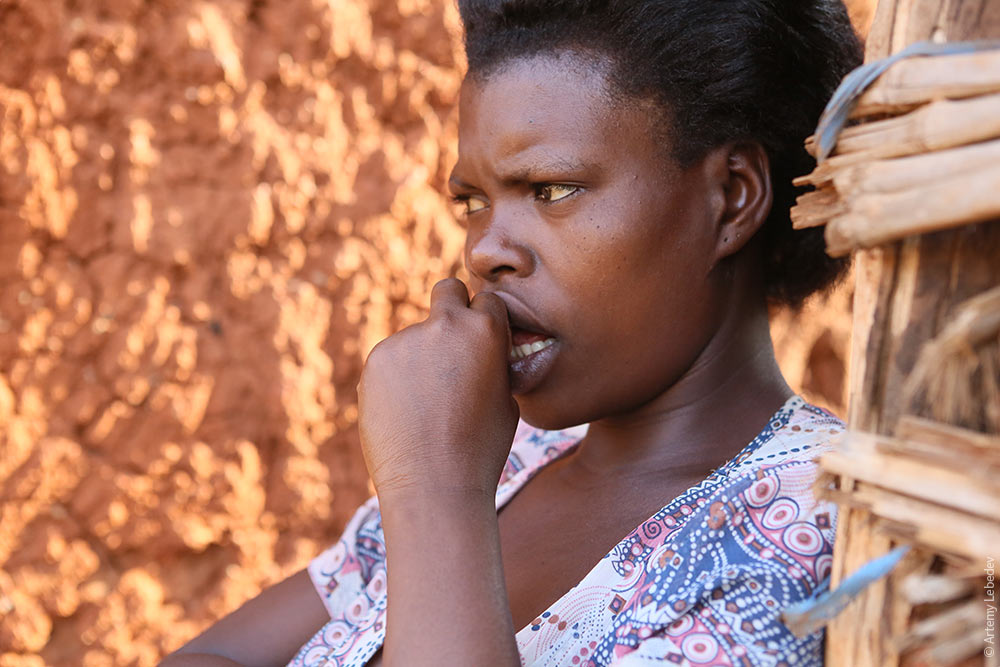 Wah-wah-waah. Time to continue onward. 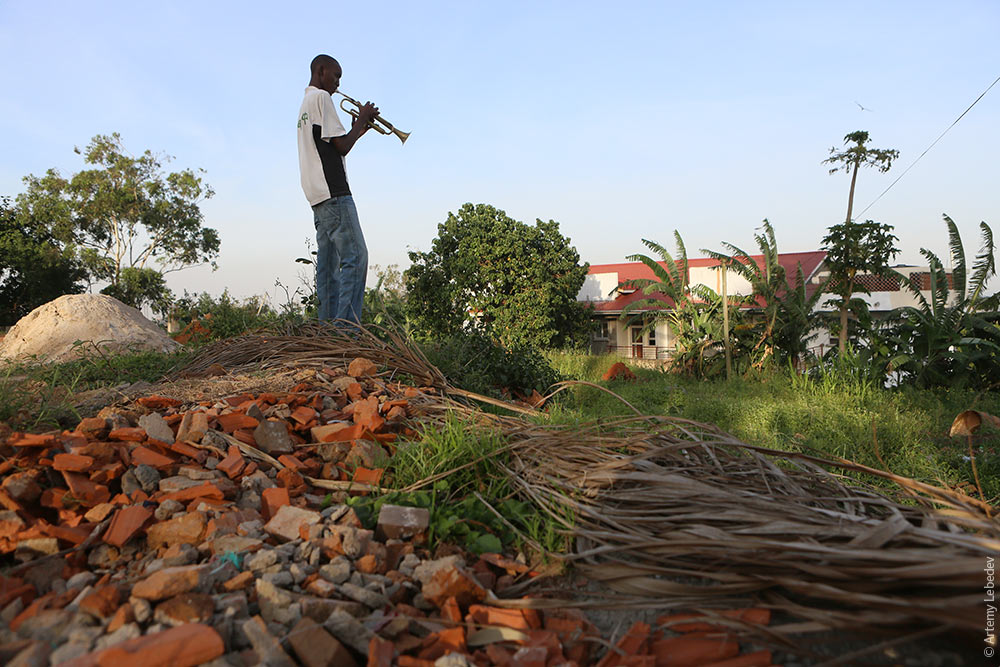 |